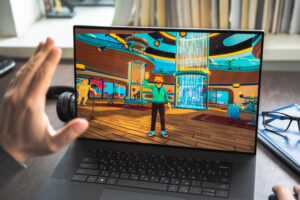Despite initial results, are executives and employees growing frustrated with working from home and concerned that it’s killing innovation? Yes, but there are other ways to foster innovation.

Image: iStock/EtiAmmos
Working from home is affecting all teams differently, but some believe it’s stifling innovation. A recent article in The Wall Street Journal featured excerpts from interviews with various CEOs regarding remote work. More than 60% of the comments were negative about the value and sustainability of working from home, and interestingly only one of those negative comments was related to the logistics and infrastructure of working from home, a common complaint among workers.
SEE: TechRepublic Premium editorial calendar: IT policies, checklists, toolkits, and research for download (TechRepublic Premium)
Also interesting was that concerns about productivity and quality of work only concerned a single CEO of a startup. The other executives who expressed a negative opinion of working from home were concerned with two overarching themes: Innovation and interpersonal interactions. Much has been made of the initial productivity concerns around working from home, and the surprisingly consistent or even increased productivity in the initial wave of home working. However, concerns around innovation and physical proximity are interesting and seemingly related.
Some say remote innovation isn’t possible
The pairing of concerns around innovation and interpersonal interaction is intriguing, as historically, innovation was considered a contact sport that required close physical interaction. The fact that many of the CEOs interviewed by the WSJ were concerned about their company’s ability to innovate while working remotely isn’t surprising.
SEE: 3 ways to help your team stay connected while WFH (TechRepublic)
We’ve seen this movie before; in the early days of outsourcing and offshoring, a major impediment to those practices was innovation, and most teams and executives assumed that physical distance was the root cause for this inability to innovate. It was therefore assumed that you could outsource rote work, but innovation required a physically co-located team.
Explore the problem behind the problem
It’s easy to cite the biggest and most obvious change in the last year as the root cause for concerns around inability to innovate. Most organizations no longer have their entire team a dozen footsteps down the hall, making it easy to throw up one’s hands and assume that until this changes, innovation is a casualty of COVID-19 that won’t be resuscitated until some undefined return to normalcy.
However, there are hundreds of organizations that continue to innovate and were able to produce significant innovations through teams that span not only remote and in-person workers, but workers scattered across geographies, languages, and time zones. One core ingredient to innovation that physical proximity has always provided is focus. If you were gathering key personnel from across the globe to perform a targeted task, it was easy to get everyone in the same room, close the door, and through the sheer force of everyone being physically proximate, watch as the best brains in your company closed down laptops, stashed phones, and were ready to engage in 30- to 90-minute sessions of uninterrupted focus. If you were lucky, you might even get a half-dozen of these focused sessions over the course of a couple days, advancing key initiatives, developing new concepts, and blowing up roadblocks.
SEE: If you’re asking for feedback, make sure you use it—or at least explain why you’re not (TechRepublic)
In the work-from-home era, at best you might get 10 minutes of focus after the late joiners finally arrive and figure out how to turn on their video, or someone gets an Outlook notification and begins ploughing through email while appearing to be engaged. While we humans are wired for physical interaction, innovation remotely is not impossible, and it’s this lack of highly focused energy that’s driving the executive perception of inability to innovate, rather than some inherent magic to physical proximity.
If you want to rekindle that magical feeling you get when you have your top team in a room, and it feels like previous challenges are melting away, and new strategies and tactics are being effortlessly created before your eyes, it’s going to take more work than just ordering everyone onto airplanes on a specific date. In fact, there are some benefits to the remote world, in particular an ability to connect with far-flung minds in minutes rather than scheduling logistics months in advance.
Try diligence rather than exasperation
Rather than blaming the unchangeable shifts to remote work, try exploiting the tools you have. Instead of booking a full-day video conference, which quickly descends into half-focused individuals doing other things, book 90 minutes with your team. Send a short pre-read, ask that everyone closes Outlook, shuts off their devices, and commits to focusing on the task at hand. Request 100% video participation, don’t be afraid to use virtual (or even real) whiteboards, assuming everyone can see them, and target a group of no more than nine before you start creating virtual breakout rooms.
SEE: Launch a 90-day experiment to get business and IT projects off the ground (TechRepublic)
You may find that with a bit more planning than “everyone get on the plane,” and tempering your expectations from half-day sessions to 60- to 90-minute bursts of energy, you can create that flow state so many executives are missing. In fact, you may be able to get four to six such sessions, spread over a number of days or weeks, in the time it would take to harmonize travel schedules for a physical meeting.
Once there’s a return to normalcy, the remote innovation muscles you develop now might even allow your teams to lay the groundwork for wildly productive in-person meetings, creating an unbeatable combination of physical and virtual. Don’t be tempted to assume innovation is impossible remotely; rather, try tweaking when, how, and how often you collaborate, and you may be surprised by the quality of the result.
Also see
Source of Article




